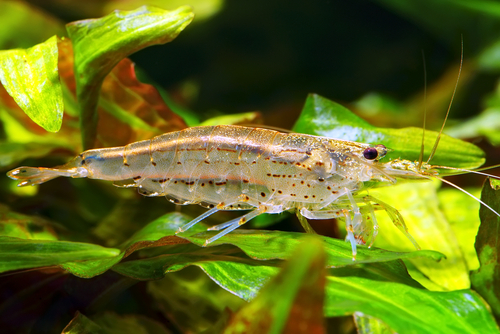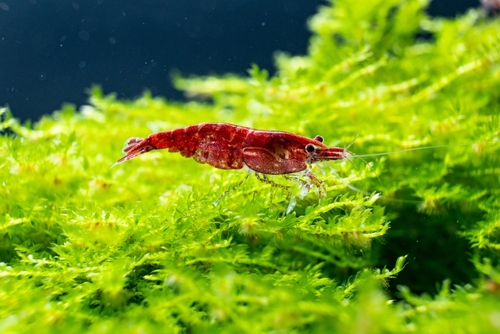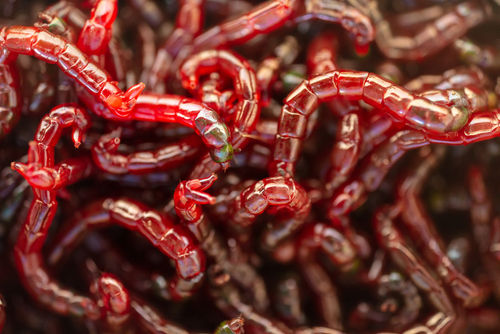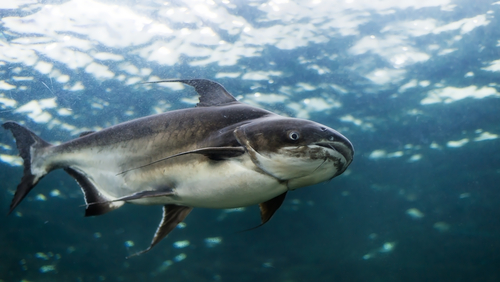Are you ever curious about how long marine creatures live? In particular, how long does a shrimp live? How well are they able to adapt to their changing environment? While some sea creatures can reach impressive lifespans, others may not survive longer than a few weeks.
One of the most intriguing species among them is the shrimp. Acquiescing yourself with these marine creatures is certainly something. Their evolutionary trend certainly is a fascinating topic that many people don’t think about often. But understanding more about the different species of shrimps and their lifespan can help us gain better insight into their ecosystem and our relationship with them.
In this blog post, we’ll look at factors influencing a shrimp’s life expectancy and discuss some interesting information on the fascinating creature. Keep reading if you’re interested in learning more about the fascinating lifecycle of these hardy yet delicate critters!
Contents
Shrimps

Shrimps are a type of shellfish; more specifically, they belong to the order decapod, which is under the subphylum crustacean. Other aquatic critters that fall under this order include lobsters, crayfish, prawns, and crabs.
The distinguishing feature of all decapods is their 10 legs, exoskeleton, and a pair of antennae. Shrimps come in multiple sizes and colors, some even having the ability to change color depending on water temperature or surroundings.
Generally, shrimp are scavengers and feed on microscopic algae, fungi, and detritus, although their diet can also include small invertebrates like plankton.
Despite their size, these animals can have surprisingly large impacts on their surrounding ecosystems due to their feeding habits and attractive nature for larger predators. In fact, shrimp provide an important component to marine food webs both near shore and offshore in many parts of the world.
Types of shrimps
You can find a number of these tiny crustaceans worldwide; from fresh waters to salt oceans, you will find different shrimp species that are well adapted to living in these water bodies.
Here are some of the more popular shrimp species; this class shall be based on natural habitat.
You also shouldn’t miss:
1. Ghost Shrimp

Also known as glass shrimp or grass shrimp, this is a dwarf shrimp species found in the South-Eastern region of the United States. There are several species within this group, and as the name implies, they literally look like ghosts.
Their evolutionary adaptation is a transparent look that makes them hard for predators to spot. Of course, there’s a rich irony in the fact that while they are bred as ornamental species for aquariums, they are also sometimes bred to be eaten as live food for other bigger aquarium animals.
2. Amano Shrimp

The Amano shrimp is probably the most popular freshwater aquarium shrimp around, and almost anyone you meet has considered having it in their shrimp tank before. Native to Taiwan and Japan, this type of shrimp can grow up to a length of 2 inches.
Amano shrimps are very fun creatures to have in your fish tank as they are usually full of activity. They’re also very useful as they are good at eating up any algae in your aquarium, and they’re very low-maintenance organisms, requiring little effort to keep compared to most shrimp species people keep in their tanks.
3. Red cherry shrimp

Otherwise known as Neocaridina shrimp, these are another class of really great shrimp to add to your shrimp tank. Red cherry shrimp live in freshwater and are native to Taiwan, just like the Amano shrimp, but most you will see are bred in captivity.
Cherry shrimp can survive in a range of water parameters as long as the tank water is stable or, at least, has a decent flowing current.
4. Dwarf Shrimp

Dwarf shrimp have become a massive sensation in marine pet circles recently. While only 2 to 3 species were available in the ornamental fish trade in the United States 5 to 6 years ago, the variety of species people breed, import, and sell has become almost overwhelming.
These shrimp are generally known as Caridina shrimp, and nearly 300 known species are known (although recent research has convinced marine experts that this entire genus needs reviewing.) Dwarf shrimp live in temperatures ranging from 22 to 28 degrees Celsius.
5. Caridean shrimp

The Caridea, often known as caridean shrimp or true shrimp, is a suborder of shrimp in the Decapoda order. This infraorder encompasses all true shrimp species, and they can be found in various habitats, with a quarter of the known species being freshwater shrimp and others living in salt water.
This large group of aquatic organisms includes numerous commercially vital species, such as the Macrobrachium Rosenbergii (familiar last name, for sure), and they are found on every continent except Antarctica. The oceanic species can be found at depths of up to 5,000 meters (16,000 feet) in habitats from the tropics to the poles.
6. Harlequin shrimp

Harlequin shrimp (Hymenocera picta) are some of the most beautiful marine invertebrates in the world. They are predominantly white with brightly colored markings all over their mantis-like body.
They can grow up to a maximum size of 2 inches in most cases (female shrimp in this group are noticeably larger than males.) Harlequin shrimp are saltwater dwellers and can be found on rubble piles outside of coral reefs all the way from Hawaii to the Indo-Pacific region.
7. Neocaridina shrimp

Neocaridina shrimp are a subset of dwarf shrimp generally found in South-East Asia, where they live in streams and ponds with abundant plant life and often wood and rocks as natural substrates. However, many species in the group have been captivity grown, and the original wild species in certain cases is debatable.
How Long Does a Shrimp Live?
So, now that we know a bit more about shrimps and just how much variety there is among them, let’s answer the question of lifespan for both saltwater and freshwater shrimp.
How Long Does Freshwater Shrimp Live
Shrimps have a limited lifespan compared to most other animals that you may know. Fan shrimps, for instance, have a far longer lifespan than dwarf shrimp, which typically only live for a few months to a year. Some may even live for up to 12 years in aquariums, though these are very rare.
The long-armed shrimp, Macrobrachium rosenbergii, may reach a length of 50 cm with its claws added, and it is the largest species of freshwater shrimp, yet it only has an 18-month lifespan in the wild. The shrimp migrates many kilometers upstream during this brief time, grows from a pinhead-sized larva to sexual maturity, and then migrates all the way back to breed in the river mouth area.
How Long Do Saltwater Shrimp Live?

Aside from their beautiful, vivid colors, which make saltwater shrimp a wonderful addition to a reef aquarium, their lifespan also adds to the picture. Compared to most freshwater shrimp species, saltwater shrimp tend to grow bigger and live longer.
Most saltwater shrimp have a lifespan of at least two years. This class includes well-known saltwater shrimp varieties such as Scarlet skunk cleaner, Pistol, and Coral banded shrimp. Some saltwater shrimp species, however, have a one- to two-year lifespan.
Popular peppermint shrimp, for instance, have a lifespan of one to two years. However, some saltwater shrimp species have substantially longer life spans. Harlequin shrimp, for instance, can live for up to 7 years.
Lifespans of Other Shrimp
Here are some other shrimp and their average lifespans.
1. Ghost Shrimp
The average lifespan of a ghost or glass shrimp can be anywhere from a few days to a year. A Ghost Shrimp might be found to live a little bit longer than a year if the circumstances are right and with a little bit of luck. However, their lives usually don’t extend much longer than that. Once put in a tank or aquarium, ghost shrimp face a high risk of dying pretty quickly compared to their tank mates.
2. Amano Shrimp
The lifespan of an Amano shrimp is two to three years on average, though they tend to perish right away after being put in a tank. Stress from transportation or changes in water chemistry or temperature is most likely to blame for this.
3. Caridean Shrimp
This set can be considered a mother set of the Neocaridina, and all shrimp within this group tend to live anywhere between 12 to 24 months, depending on the water parameters and habitat (in captivity or the wild), as we will soon see.
Factors that influence a shrimp’s lifespan
The lifespan of a shrimp is not absolute; rather, it’s relative and depends on many different conditions, most of which have to do with their habitat. So if you already have an occupied shrimp tank or are planning to get a shrimp soon, you should pay attention to these crucial factors. However, you should note that these factors are not to be taken in isolation as different factors tend to work hand-in-hand to affect shrimp lifespan.
Feeding

Not unlike any other animal on the planet, shrimp can live longer or shorter depending on their nutrition. Young shrimp need healthy nutrition to sustain their growth. Now, all the sustenance they need can be found in the wild (which is how they can survive there in the first place).
However, aquarium shrimp are a different story, as they have to rely on you to provide the food they need in their tanks. This is why, barring predators that may cut their lives short, wild shrimp may tend to live longer than aquarium shrimp because the latter may usually suffer nutritional neglect.
So, let’s explore the shrimp diet in the wild and the aquariums.
What Do Shrimps Eat in the Wild

As we’ve seen before now, shrimp in the wild have access to an entire ecosystem that provides all their dietary needs. As a general rule, shrimp are scavengers who spend most of their time in the wild consuming anything that has fallen to the bottom of their habitat.
Because they are opportunistic omnivores, they will eat both live plants and animals or dead ones, which is why they are regarded as the marine sanitary crew. Baby shrimp are especially good at eating algae wafers.
As larvae, shrimp are fully subject to the water currents; therefore, they will consume whatever is afloat, typically plankton (microscopic plants and animals). They will also eat anything from dead fish, worms, plant leaves, and even the remains of other shrimp.
What Do Shrimps Eat in a Tank
Shrimp in a shrimp tank don’t have as robust an ecosystem to draw from as their counterparts in the wild, but they still have their options. In fact, their eating habits in an aquarium form the biggest reason most people keep them.
Shrimp in a tank will eat anything from algae growing at the base of the tank and the remains of their tank mates to fish food particles and pretty much anything edible that falls to the tank bottom. Additionally, shrimp love biofilm, and as with wild shrimp, this can also include their own eggs or larvae.
Habitation
Not surprisingly, habitation also affects how long a shrimp will live. As we’ve seen, shrimp live in various habitats, from saltwater to freshwater habitats, and each of these has different impacts on their lifestyle and lifespan.
Shrimp are found in lakes, oceans, and rivers. Since they are bottom-dwellers, they usually live on oceanic floors and muddy or sandy river banks. Smaller species can be seen living inside sponges, while seashore dwellers, like the mantis shrimp, burrow into the sand, mud, coral fissures, and rocks.
Natural Habitats
In their natural habitats, shrimp tend to thrive as they can take advantage of a robust ecosystem. They can also indulge freely in behaviors vital to their lives, such as burrowing, scavenging, etc. They can feed on various natural food sources in these environments, and since they are in their natural habitat, it bodes pretty well for their well-being.
So, since their lifespan depends on ideal conditions that are usually abundant in their natural space, wild shrimp may tend to live a tad longer—at least, barring one other factor that we will soon talk about.
However, it is important to note the caveat that survivability also depends on how much an organism has adapted to its surroundings. A cherry shrimp, for instance, that has not fully adapted to its natural environment might thrive but still be negatively impacted by it.
Tank Water Shrimp
On the other hand, shrimp in a tank may tend to suffer the absence of some of these factors. This can be because the person keeping them is negligent, unaware of the scope of shrimp needs, or just unable to maintain the right conditions as often as needed (for instance, if the shrimp tank keeper is a career person who barely has time).
Shrimp in such conditions will tend to suffer neglect in some vital areas and just not live as long as they should. This is why the best-kept tank shrimp are those kept by marine biologists studying these creatures. But don’t worry; we will also discuss how to ensure the best living conditions for your shrimp and improve their longevity.
Predators

Another factor that strongly affects the lifespan of shrimp is the presence of predators. Not unsurprisingly, fish are very low on the food chain, and they happen to have many natural predators. These include many fish, including sharks and other large sea-dwellers like whales (which are technically not fish). Small shrimp are particularly vulnerable to being eaten by sea urchins, starfish, and sea birds.
In fact, even a crab can feed on them. This diversity of natural predators can drastically reduce the lifespan of shrimp in the wild. So, we can say that while the natural conditions ideal for the health of a shrimp are abundant in the wild (such as the degree of salinity and the presence of many food sources), the presence of predators tends to throw a wrench in that engine.
However, this predation is the major reason why shrimp have evolved burrowing before to help them create spaces where they can hide in the absence of other hiding places like natural crevices and holes.
Of course, these predators will usually not be present in a tank, so tank shrimp are much safer than wild ones. Thus, shrimp in an aquarium or tank will generally live longer in the absence of predators.
Water Quality
The water parameters determine the water quality and, by extension, how much it is survivable for the shrimp. These include water temperature, salinity, pH, and cleanness.
Of course, organisms tend to evolve and thrive in environments that suit their needs for survival, so various natural habitats have this delicate balance that shrimps need. However, shrimp have also evolved migration habits for finding waters that suit various periods in their life cycle.
Now, for shrimp to develop and thrive in an aquarium, the water must be clean and well-oxygenated. But what exactly does “clean water” mean here? It means the water must be free from any nitrite or ammonia. And no more than a 20 ppm concentration of nitrate should be present. This is because ammonia and nitrite are fatal to shrimp and other aquatic life.
However, despite the fact that nitrate is less dangerous for shrimp than ammonia and nitrite, it can still be fatal at high concentrations. Because of this, strive to maintain the nitrate level below 20 ppm. Thus, you’ll need to cycle your fish tank to maintain zero ammonia and nitrite levels.
The lifespan of Shrimp in Nature vs. in an Aquarium
Generally speaking, there is no absolute difference in lifespan between shrimp kept in aquariums and shrimp found in the wild. As we’ve seen throughout this blog post, a shrimp’s longevity is influenced by its living conditions, including such metrics as the quality and accessibility of its food, the water quality, and whether they have predators as tank mates or in their wild habitat.
Shrimps have evolved to live in a certain environment, and they will develop and prosper in the ideal atmosphere. On the other hand, if the shrimp do not receive the best habitat, it can impact how long they live.
So, the bottom line here is that: if shrimp raised in captivity find the right conditions in an aquarium, they will thrive and live longer than their wild counterparts whose natural habitat is disrupted or, occasionally, not ideal (or if they end up as lunch for a predator).
Tips to increase the lifespan of shrimps
So now that you understand shrimp a little more, here are some tips to help you set the right aquarium conditions for them to live in.
1. Maintain Clean Water in the Aquarium

To extend the life of your shrimp, cleanness is one of the water parameters you must maintain. This doesn’t necessarily mean the water must look physically neat (though shrimp will naturally clean the water to some degree, scooping up all uneaten food particles and algae on the surface and tank bottom). But it really means that there shouldn’t be any ammonia in your aquarium.
The ammonia created in an aquarium causes the shrimp there to have a short lifespan and sometimes even die.
2. Maintain Other Water Parameters
For each shrimp to survive and grow, the water parameters must be within a certain range. Thus, it’s important to research and find out the right water parameters for the shrimp you are raising. You will find that the requirements vary from shrimp to shrimp.
The water parameters to maintain for your shrimp tank include pH, KH, GH, and temperature.
3. Feed Your Shrimp with High-Quality Foods
If you want your shrimp to live longer, it is important to feed them a varied diet of rich foods. You can feed them anything from biofilm and algae to live plants or vegetables, which are a favorite of the most popular shrimp species. The best vegetables to try are spinach, carrots, okra, and zucchini.
Shrimp will also eat the eggs or larvae of their tank mates, so you should consider that if you want to keep them in the same tank as other fish or shrimp.
4. Put Some Live Aquarium Plants in the Tank
Aquarium shrimp go well with live plants. In addition to looking fantastic on live, green aquarium plants, shrimp also like to hide, and live aquarium plants make great hiding places for them.
Additionally, shrimps are scavengers, so they love to explore the foliage of these live plants and eat the food scraps that have become lodged there. The best options for this purpose will be moss and floating plants with bushy roots to hide in.
Conclusion
As we have seen, the average lifespan varies from shrimp to shrimp and varies according to the natural or tank conditions they are subjected to. These include the food, presence or absence of predators, temperature, and how adapted to their habitat they are.
With this information, you will hope that you will be able to create the optimal tank conditions for your tank crustaceans to thrive and live longer.

Ian Sterling, founder of Fishlab.com, began his aquarium journey over 30 years ago, driven by a deep fascination for fish and their diverse personalities. His website, Fishlab.com, is dedicated to making fishkeeping accessible and enjoyable, offering beginner-friendly guidance, expert insights, and a community for aquarists to connect and share experiences.


